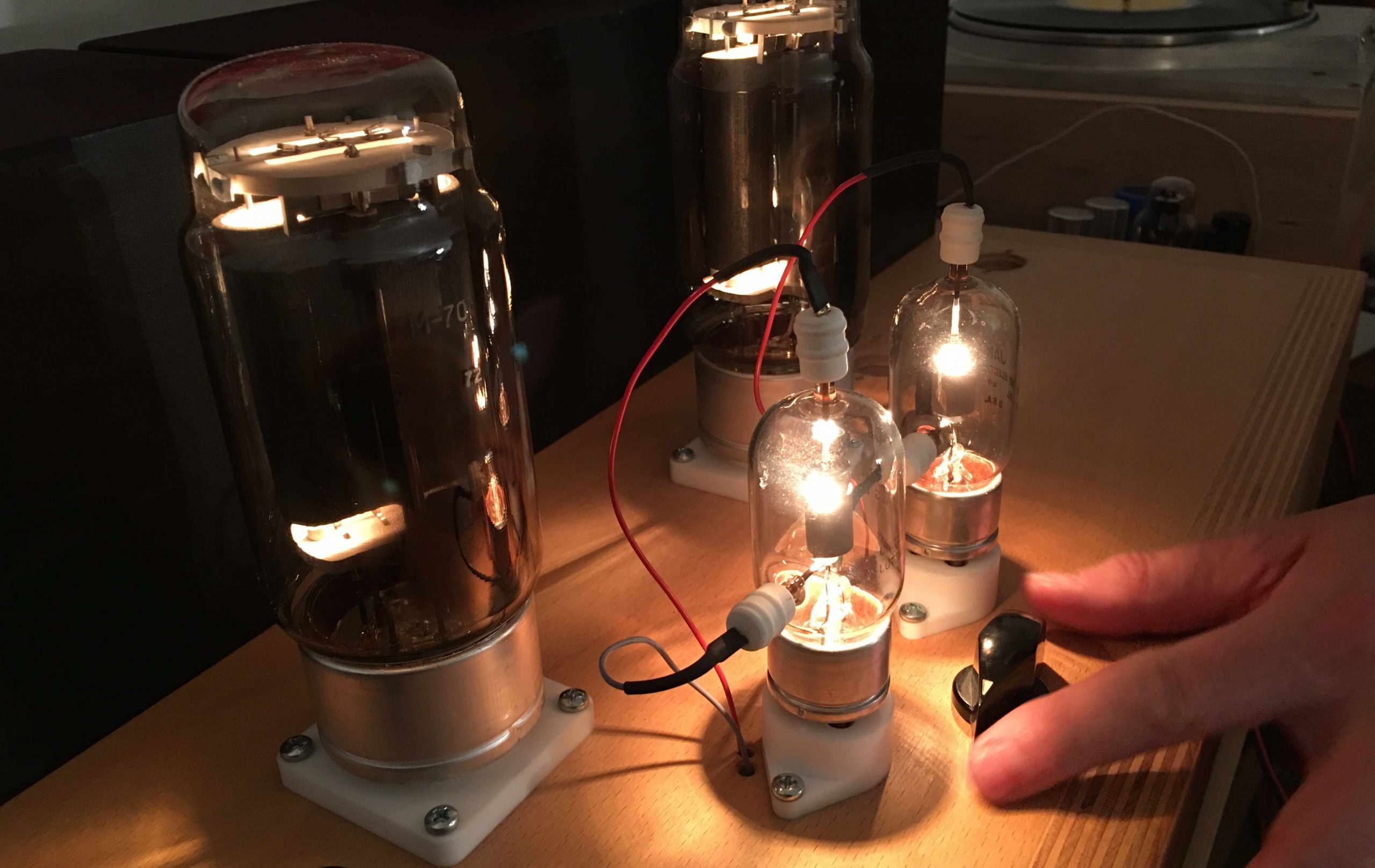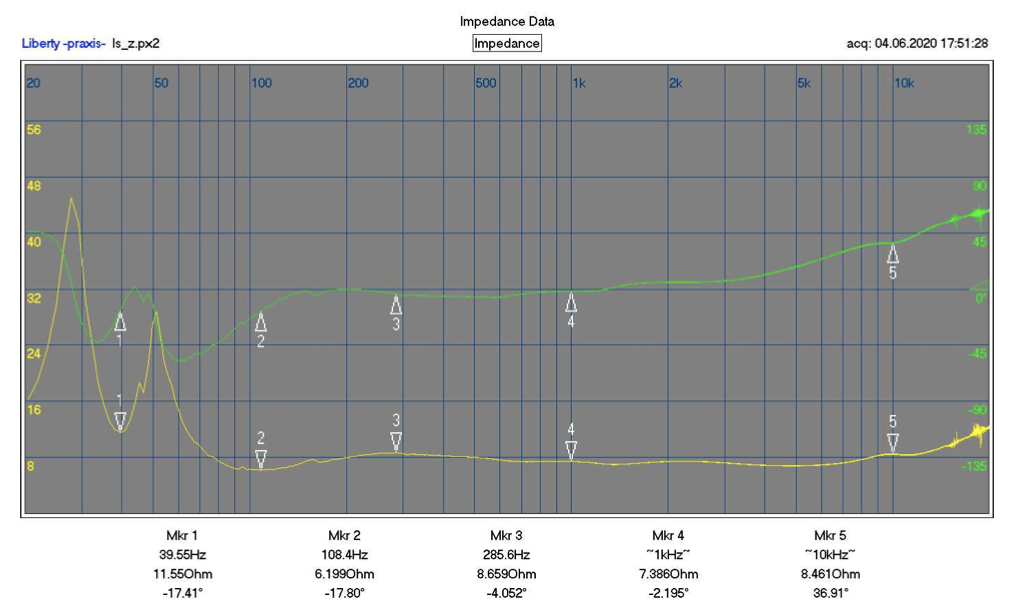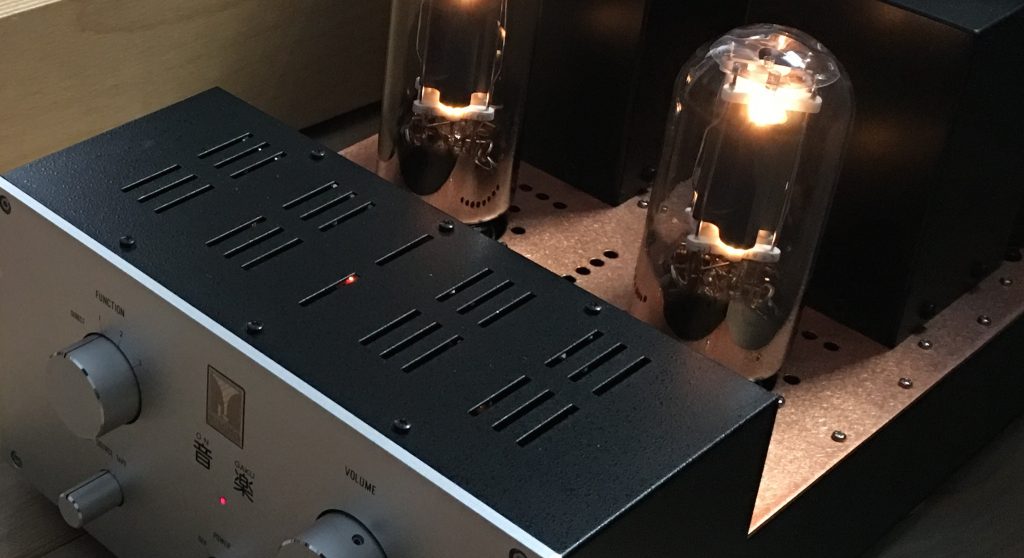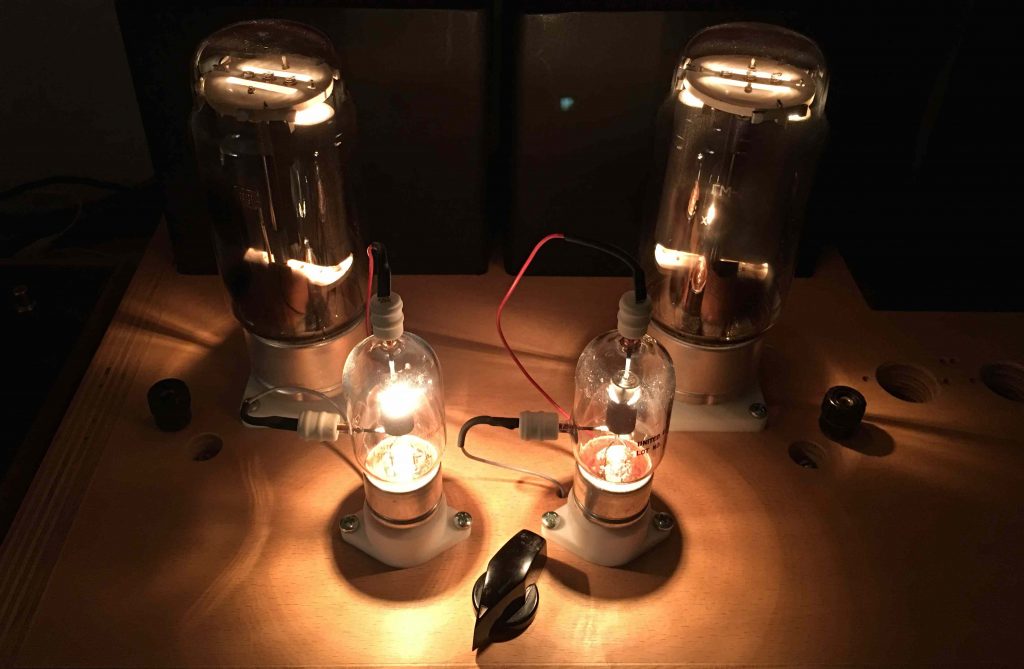
Tube sound again
For objectivists the characteristics of tube amplification is mostly due to additional components of sound. Many tube lovers call it a higher purity of sound.
Others again enjoy „easier listening“ in terms of warmer and maybe
slightly compressed sound – less offensive. Let me ignore that old-school amps here.
Measured characteristics
Todays standard amplifier distortion measurements show higher distortion with
tube amplifiers, which of course would be „additional noise“, and not „pure sound“.
Sound impression
Still, with good quality tube amplifiers and well matched loudspeakers, I tend to hear a cleaner sound from those compared to solid state power amps.
Manifesting itself in better speech intelligibility, higher musical contrast and cleaner high frequencies (HF), leading to more involvement.
The question
But that perceived higher dynamic contrast could as well as better speech reproduction be caused by dynamically enhanced harmonics.
Just like instruments produce more harmonics compared to the fundamental tones when played louder. And like tilting the balance
towards a brighter sound.
Getting the picture
You have certainly once tried one of those „what is missing“ picture comparisons. Have an original on the left side, and a slightly modified version on the right.
Now count the details that are changed or missing in the modified version.
It may take a time to detect them all. But once you have, you can easily find them again and point them out to others.
Our hearing works similar to that „what is missing or changed“ detection.
Aspects of sound we are familiar with are easily identified in different situations, either missing or being enhanced.
But confronted with new aspects not yet trained to hear, a challenge arises.
Or worse, aspects we start to not-like in our system drive us crazy.
Even worse, in terms of „noise“, sounds we do not like disturb us more the longer we are exposed to them.
This is what some call the „reach-out“ activity of our auditory brain processing.
A Viennese community
One of the reasons I enjoy being part of our Vienna Audio Labs activities
is sharing knowledge and aspects of niche-work between audio professionals and consumers.
Yesterday, quite spontaneously we decided to try a distortion detection procedure.
The driving idea for me was to find out whether we could find a „tube sound“ signature in music manipulated with professional tube emulation software. And if that signature would enhance or reduce the musical message.
Well, of course I am aware that many have tried the same before and written about it.
But isn’t first hand experience nice?
A failed experiment
While theoretical discussions were fun, the listening examples did not translate to all listeners – including myself, sitting in a back row.
Since I couldn’t read the distortion components shown by the FFT analyzer I can only estimate the additional THD at or below 1% with dominant second order characteristic.
We may expect to hear that within well known, low noise and high quality playback.
But here, due to high noise from the beamer and a front row between me and the speakers, also masked by heavy low frequency (LF) content again enhanced by LF room modes sitting close to the back wall, no chance.
Next time we will prepare better, and I am sure most of us will get „the picture“.
Better tools for subjective testing
I enjoy working on (horn) loudspeakers that are the right „transducers“ for low power tube amps. Besides being just the ticket for single ended amplifiers, they also convey more musical pleasures with any other good quality amp.
Read my last tube sound blog?
I will again install an Alpha horn at my workshop, with purely resistive 8 ohms impedance and >100 dB / W / m.
That is the right environment to compare SE amps!
But even if below comparison was done with the new Betahorns, their impedance

and 97 dB / W / m efficiency (real figures, not today’s exaggerated advertising claims) may be called very tube friendly.
Another listening comparison
In my early years of speaker building (1980s) I assumed that if I really do it right my loudspeaker would sound great with any reasonably made amplifier.
The Kondo Ongaku amplifier
Just when the Kondo Ongaku amplifier appeared at a local audio show:
it transported tone and texture better than any other amplifier I had heard before.
But at a high price, and low loudspeaker compatibility. Besides, it seemed a little shy on top.
Later on, I had fun using a more recent version of that amplifier for some weeks at home. Not shy on top any more, and still at the forefront of amplifier sound quality (given the right loudspeaker, of course! Don’t call Kondo „thin“ sounding if you squeech out the last watt with your low efficiency speakers or load down a Kondo preamp with 10k power
amp input impedance).


Last month we compared that Kondo Ongaku with a friends excellent DIY SE GM70 power amp, and 3 different sources:
Playback Designs MPS-5 (SACD and CD player), EAR DAC4 + SACD Transport and a TDA 1541 based, modified Philips CDP transformer coupled to SE tube-output (CD only).
Accompanied by a quick loudspeaker cable experiment (yes, even the most sceptic listener heard a positive difference towards the better cable).
Clear results
I asked the listeners for a short, written review.
Obviously all parts reproduced a very realistic and detailed sound.
Differences therefore were small, and summarized as below:
The lesser speaker cable was instantly rejected as inferior by everyone.
Ongaku more extended highs (maybe a little bright with more detail), GM70 softer but more corporeal.
Playback more resolving, Philips sometimes more natural („textures“ and transients), EAR inbetween.
Unfortunately I had never played SACDs on the EAR before (lacking the EAR Transport), therefore the internal DSD board, which is separate from the PCM output, had never been used before. With transformers on it’s output, that may cause a lack of „burn in“.
Using SACDs the Playback was clearly superior, with CD they were closer.
For some the experience of the same tracks at home led to „something must be broken“ impressions.
A friend who also uses (different) Kondo amplifiers and the Playback, clearly prefers both.
Which again makes me happy, since I spent a lot of time to supply and tune loudspeakers as well as room acoustics for his listening environment. We tend to prefer what we know well, if we like it 🙂
My personal comment: All components tried sound good enough to live with.
The GM70 and Philips seem more natural with acoustic instruments, but miss some detail.
I wonder how the comparison would have ended if I had adapted the loudspeakers to the specific sound characters of the components.
A service that I offer for my horn loudspeaker customers.
It takes some time to get the picture – but once established, it can be haunting. Positively, if well done.